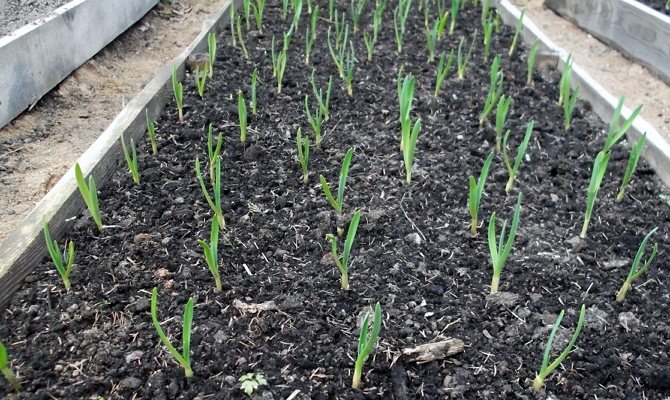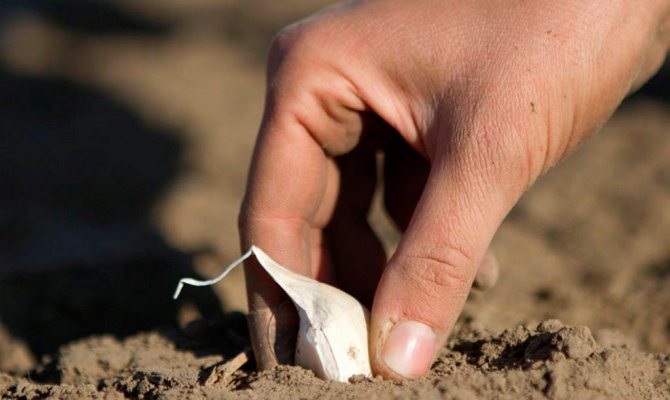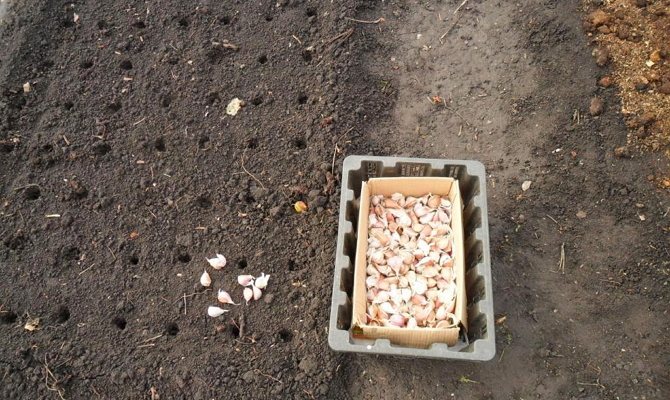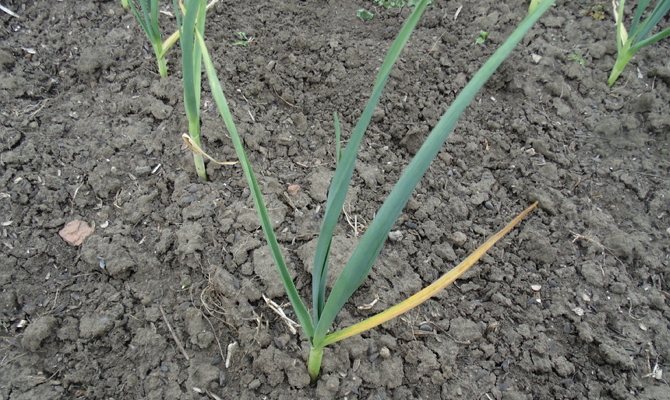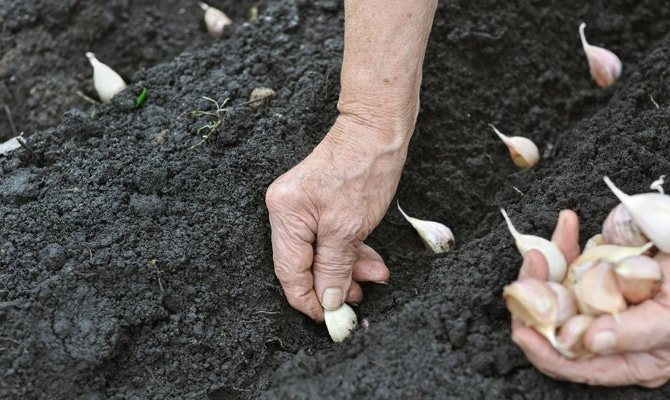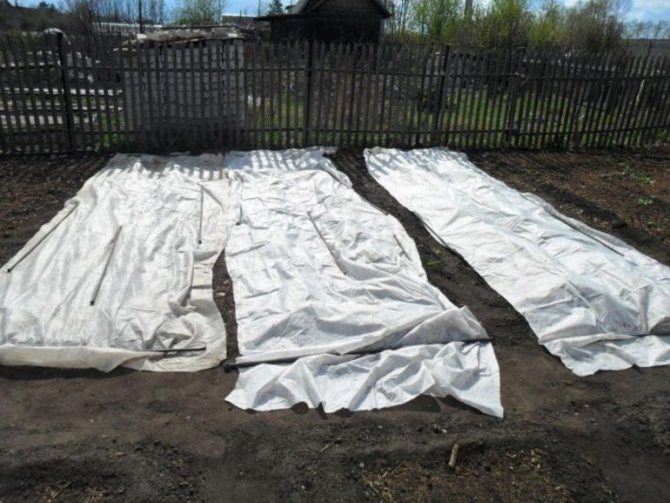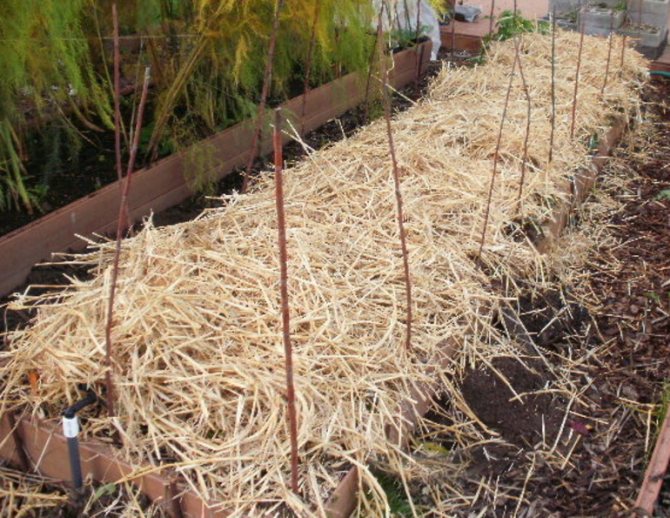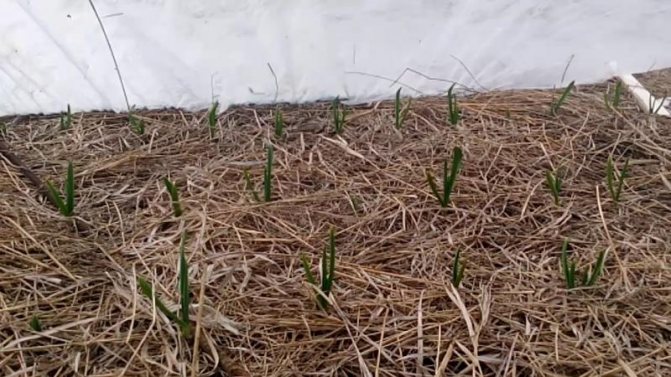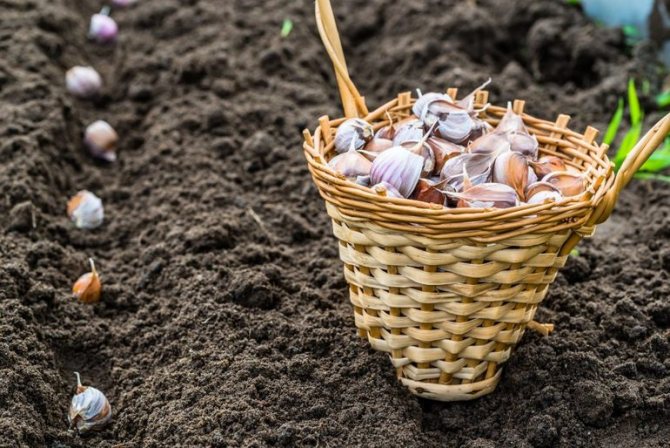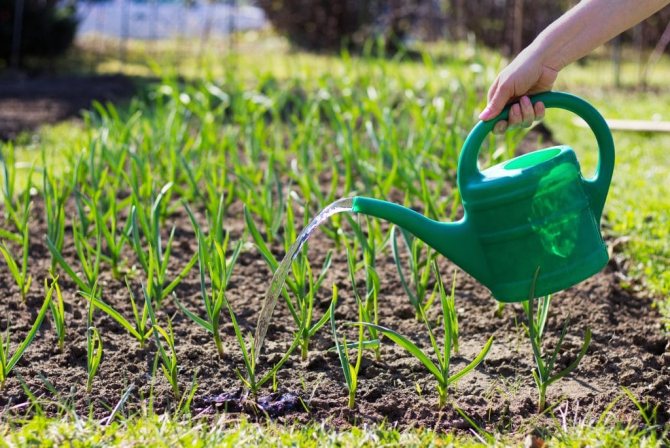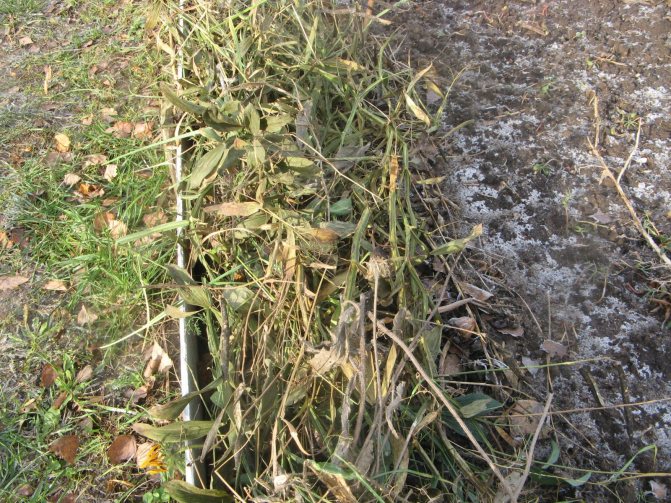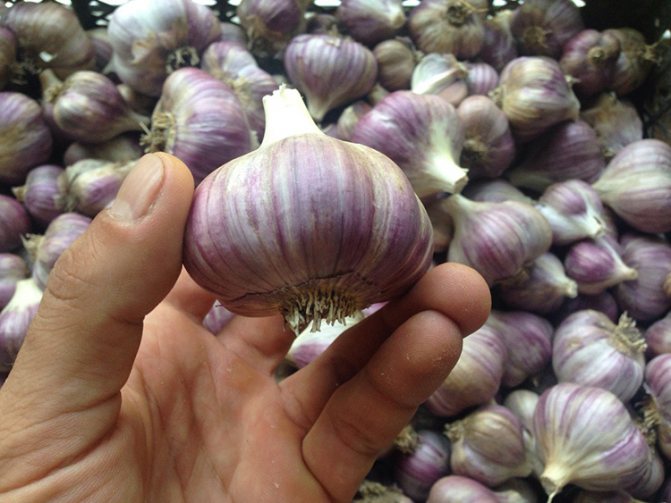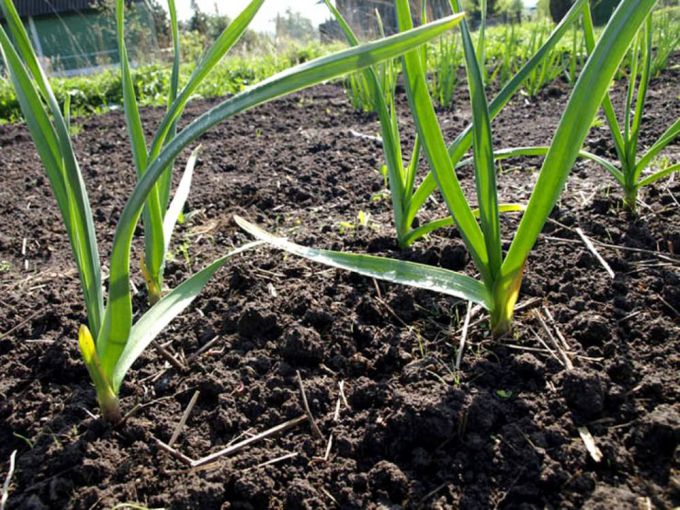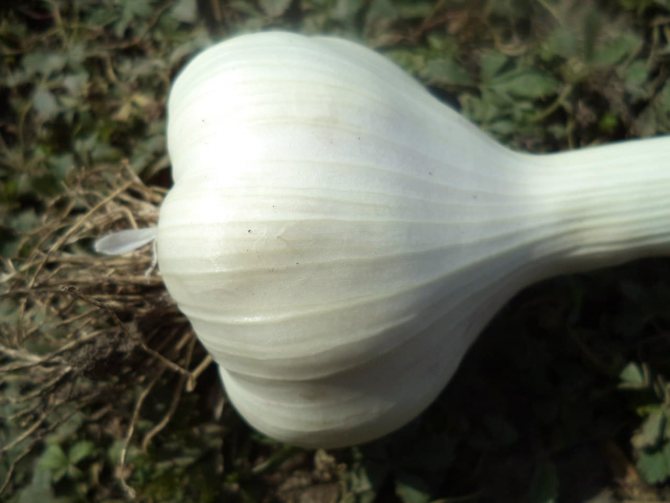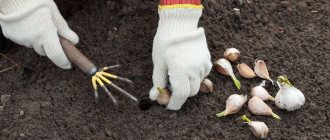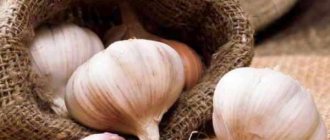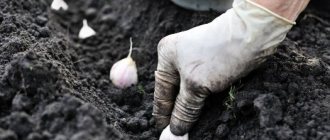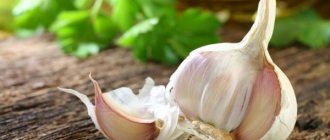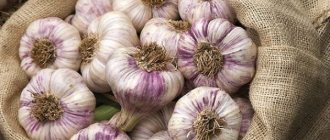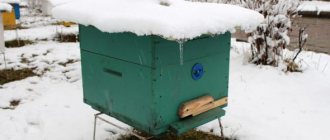It is difficult to find another vegetable that has as many valuable properties as garlic. It is very useful for the gastrointestinal tract and circulatory system, and besides, it is unpretentious, which significantly expands the possibilities of its planting. Many gardeners prefer to plant it in the fall, which is why they are faced with the problem of sheltering garlic for the winter.
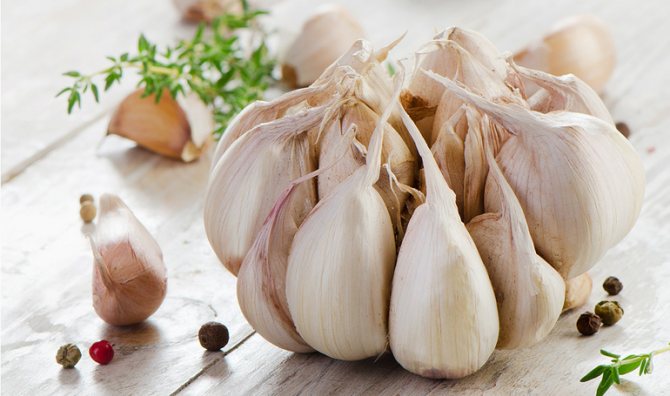
Features of planting garlic for the winter
Most often, garlic is planted in the last week of the first month of autumn or in early October. At other times, it is not recommended to carry out such actions, since if you do this earlier, the vegetable will germinate, and small seedlings will not be able to survive the frosts normally, and if you do this later, the cloves will die from the first frosts.
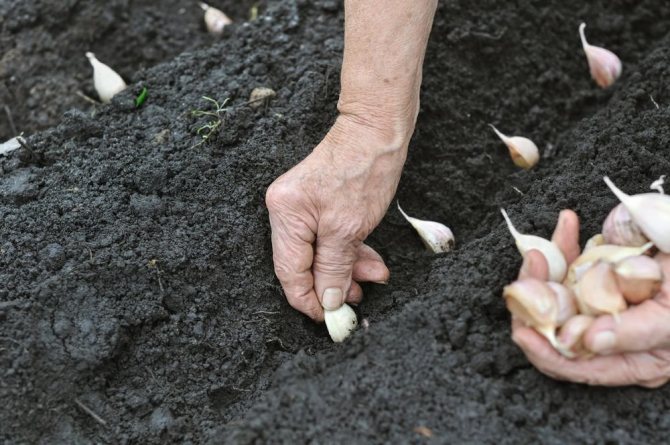

For planting garlic at this time, it is recommended to choose the largest cloves - the larger they are, the better the harvest can be obtained in spring. The culture will feel most comfortable in the place where pumpkin, cabbage or legumes grew before. Consider how and what is better to close a garden with winter garlic.
How to choose a place and prepare the soil for planting winter garlic in the Moscow region
We decided on the predecessors, now let's talk about the ideal placement of the beds: choose a place well-lit by the sun, without shade from trees and with good nutritious soil. It is worth fertilizing the soil with humus: pour at least 5 kg per 1 m2. For yield, they put 30 g of superphosphate and the same amount of potassium salt in the garden bed for the same square meter.
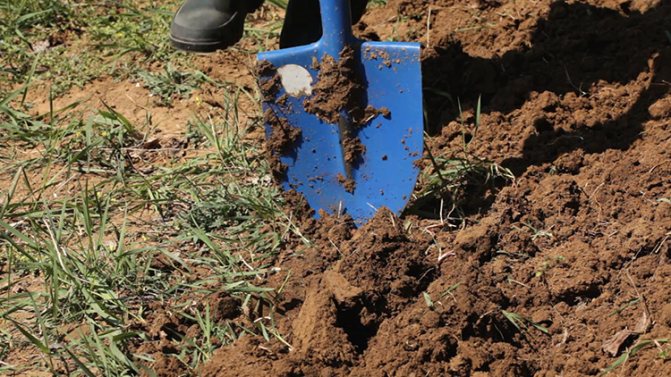

After manipulations, the entire area is dug up and leveled with a rake
It is good if the soil contains a sufficient amount of sand.
Preparing the beds and planting material
Landing preparation is also important. Any actions are carried out two weeks before the expected date of planting the garlic.
This includes the following actions:
- cleaned of debris and weeds;
- dig up thoroughly;
- saturate the earth with nutrients;
- during the formation of grooves, ash is added, and sand is poured onto the bottom.
Read in more detail how to prepare a garden for planting garlic before winter.
It is recommended to place the cloves in warm water for a while just before planting. In addition, it is recommended to temporarily lower them in a special solution to accelerate root formation.
After what siderates can you plant garlic
Garlic can grow on light and neutral soils. Often, for additional saturation of the soil with nutrients and oxygen, special crops are planted, the so-called green manure:
- All cereals except barley and rye.
- Leguminous plants.
- Forage grasses such as clover, alfalfa.
- Mustard.
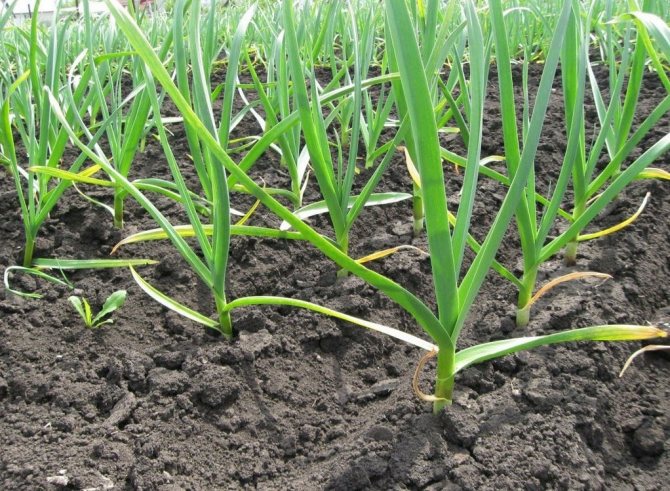

Planting winter garlic
Important! You should not plant the vegetable after crops that have similar root systems, such as onions. Planting can be carried out no earlier than 3-4 years.
Why do you need to cover the beds
Shelter of garlic for the winter is carried out to protect it from frost. Apart from this, there are other reasons why this should be done.
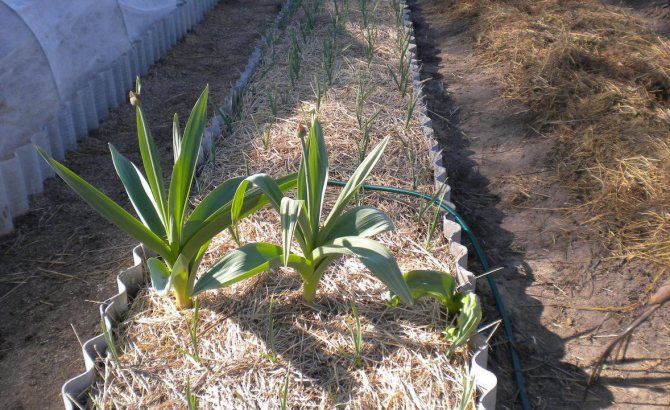

These include the following:
- Temperature changes. Sometimes in the winter season, there are several warm days when the vegetable can begin to grow, and then when frosts suddenly follow, the seedlings will die.
- A shelter will allow you to get a larger harvest.
- Organic materials provide strong shoots that will appear before others.
- Protection against diseases and pests.
- The snow-holding qualities of the shelter will save the vegetable from waterlogging and subsequent decay.
- The shelter protects the teeth from possible freezing.
- The likelihood of the death of the culture is high.
Important! If you refuse to cover the garden bed, there is a high probability that the garlic will go into the arrow.
Garlic shelter materials
Different regions use different materials to shelter garlic for the winter. Among the most versatile materials that can be used:
- Agrofibre.
- Peat.
- Sawdust.
- Fallen leaves.
- Plant stems.
As soon as the garlic is planted, the beds are mulched with a small amount of sand and ash. Serious shelter will be required when the weather worsens, forecasters predict frosts. The timing of serious warming depends on the climatic conditions of the region. This happens in mid-November, if we talk about the middle zone of the country. How to cover garlic for the winter?
How to cover garlic for the winter
We invite you to get acquainted with the materials that can be used for shelter. It is important before this to mulch the bed with a sand-ash mixture.
Agrofibre
Modern covering material, which has managed to recommend itself on the positive side. Agrofibre does not accumulate excess moisture, unlike polyethylene. In addition, the garlic will not freeze and will receive the right amount of light.
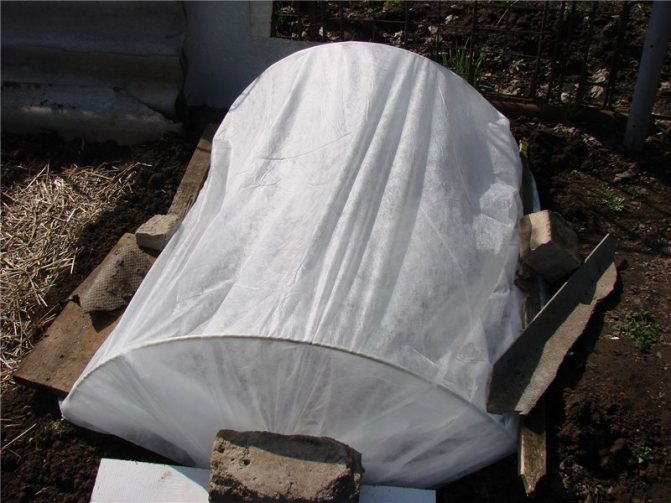

After the snow melts, the film will create the effect of a kind of greenhouse. The disadvantage of such a shelter is the price, but with careful handling, it can be used for several seasons in a row. The shelter process is easy, the bed is covered, and the edges are sprinkled with soil or stones.
Peat
It is considered one of the best natural thermal insulation materials. With the help of peat, the cloves can be protected even from the most severe frosts. In addition, it retains water well. However, the disadvantage is that during use the soil is oxidized, and after the snow melts, the peat is compacted and turns into a crust. We cover the bed with material, scattering it with a layer of about 4 cm.
Also find out how to fertilize garlic when planting before winter.
Sawdust
Sawdust is the most common method of planting conservation. They have a high level of thermal insulation, in addition, they absorb and retain moisture well. The downsides are poor air permeability, oxidation and difficulty in warming the earth.
Fallen leaves
Leaves are a good covering material that allows air to pass through, retains heat and is accessible to everyone. However, foliage can freeze or overheat during high humidity or sudden changes in temperature.
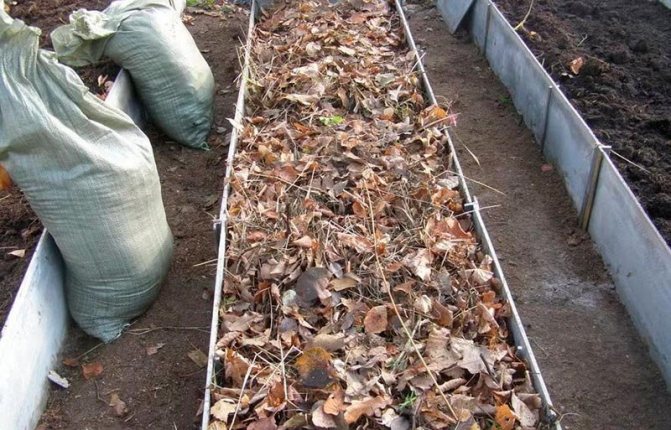

With strong compaction, all positive qualities are lost, and after the loss of air permeability, the seedlings begin to rot. In addition, many insects like to hibernate in fallen leaves, which can harm plantings.
Plant stems
Plant stems can provide good insulation for the beds. When laid in a dense layer, such a shelter helps keep the snow well and does not overmoisten the ground. However, the disadvantage is excessive compaction and friction, which can lead to rot and mildew.
Did you know? The largest garlic in the world was grown in California in 1985. Its weight was 2 pounds 10 ounces.
Thus, in order to get a good harvest of winter garlic, it is important to properly prepare and cover the beds. What material to choose for this depends on the capabilities and preferences of the gardener.
When they cover: time, timing, temperature
In order for the bed to be protected, but at the same time the covering does not cause the germination of garlic even before winter, it is necessary to accurately determine the need for the formation of a protective layer.Every gardener should know the peculiarities of his region and adhere to the following recommendations:
- In the Central regions, the procedure can be carried out from the end of September to the first days of November.
- In the southern regions - from early October to early November.
- In the northern regions - from early September to early October.
Additional Information! In the Northern regions, it is possible to form a shelter immediately after planting a crop. This is necessary due to the difficult natural conditions.
Other factors will also influence the timing:
- winter garlic must be covered before the first snowfall;
- if the temperature drops below +10 ° С;
- if strong winds start.
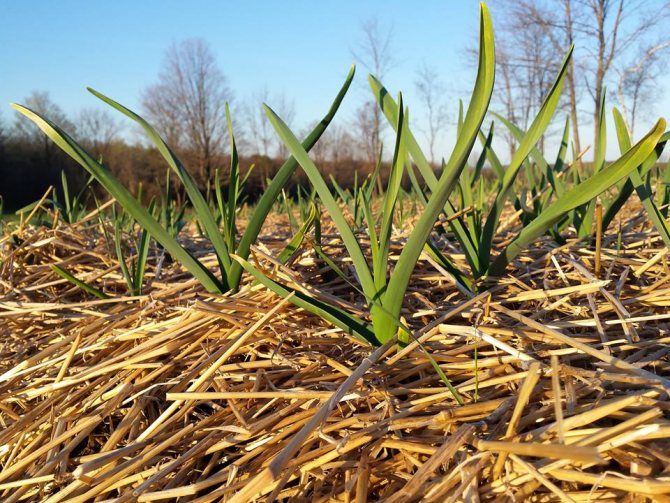

Time to hide
If you follow the weather forecast and follow the landing schedule exactly, then you will definitely not be able to make a mistake with the formation time of the shelter for the culture.
Harvesting time and determination of full ripeness of garlic
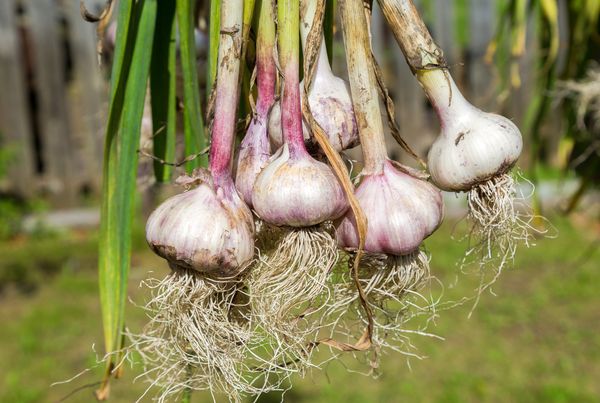

Winter varieties are planted in the fall. Winter garlic heads are large. From summer (spring), which is planted in early spring, it differs in high erect stems. Spring bulbs are small, there can be up to 30 of them in the head, but they are stored longer, about a year. The plant is dug up, taking into account the growing region and weather conditions. Experts advise doing this according to the lunar calendar. About 25 days before work, the soil around this onion vegetable should be loosened and cleared. Thanks to these actions, the plant will concentrate all its strength on growing its heads. To prevent the vegetable from rotting, it is not watered 30 days before harvest.
The maturity of a vegetable is determined by the arrows that form in June. In order for the formation of heads to receive more nutrients, they are broken off. Experienced gardeners recommend leaving 2 arrows in the garden to determine the maturity of the garlic. If the vegetable is ready to be harvested, the arrow dries up, and the box with seeds at the top cracks and becomes visible. These bulbs are suitable for planting.
Attention! It is possible to determine maturity according to the arrows only in a winter vegetable, because they are not formed in spring garlic.
Only a vegetable that is fully ripe and ready for digging can be stored for a long time without losing its appearance and nutritional properties, it makes any dishes taste original. To understand that it is time to pull out the heads of garlic planted in spring, you need to observe how its parts growing both above the ground and the bulbs themselves change. If the leaves turn yellow, this indicates a cessation of growth and photosynthesis. It's time to harvest spring garlic from the garden for storage, when the shoots still partially retain their green color.


Gardeners do not recommend waiting until they completely turn yellow, because then the peel already begins to rot. Withered and fallen leaves indicate that they were late with this work. To find out if it is ripe, you can dig out half pieces of 2 heads at different ends of the garden or pull them out. Ripe garlic has cloves:
- dense;
- not stuck together;
- well detachable;
- covered with a layer of easily removable scales.
His neck becomes dry all over. The harvesting of early varieties of vegetables begins after 3 months, as the first shoots appear, the late ones ripen for about 4 months. With frequent summer rains, winter garlic ripens earlier than in good and hot weather. If overripe, then the cloves crack. Basically, garlic keeps well for about 6 months.
Soil preparation
The main condition for a good harvest: the land must rest well. For this, a place is chosen where nothing has been growing for a month or a month and a half. It will be optimal to use a garden bed, after cucumbers, zucchini, radishes or legumes. In addition, these crops are the best precursors for onions and garlic.After harvesting the main crop, you can feed the soil with organic matter without too oxidizing it (garlic loves neutral or slightly acidic soils), and also plant green manure plants.
Mandatory conditions:
- The landing site is chosen as sunny as possible, without flooded areas and irregularities. It is optimal to build high beds for these purposes.
- You cannot plant garlic in the same place for two years in a row. In addition, onions, potatoes, and tomatoes will be unwanted precursors.
- About a week before planting, you need to dig up the soil, select all weeds and plant rhizomes.
- The surface of the earth is leveled, if necessary, irrigate.
- You can disinfect the soil with a weak solution of copper sulfate (1 tbsp per bucket of water).
- Immediately before planting, grooves are made, at the bottom of which it is advisable to pour coarse sand or wood ash. This will keep the roots from rotting when the snow melts.
After all the necessary measures, you should not cover the soil with foil or other materials, it is better if they warm up enough in the sun. Having chosen a suitable sunny day, you can start planting winter garlic.
Further care of the beds
After planting, cover the soil with a layer of mulch. If the weather is warm enough, this can be done later, but without risk of planting. In a snowless winter, it is worth preparing additional shelter, for example, tarpaulin or agrofibre. Some gardeners lay branches on the garden bed to keep the snow cover. If the plantings of garlic are small, you can manually cover the snow, for example, clearing paths.
In spring, branches and mulch are removed, plantings are actively watered and loosened. Before ensuring stable heat, consider sheltering overnight in case of frost. Around mid-April, you can thin out the thickened plantings a little, and plant new ones in the place of the frozen teeth. Spring planting of garlic in the Moscow region is carried out according to the same schemes, only it should be borne in mind that the heads of winter crops will be much larger, therefore, they will take the main place in the garden.
Harvesting occurs when the heads are fully ripe. For winter crops, this is usually in late July - early August. By the way, this is when the height of the harvesting season begins, so the hot spice will be just right.
Storage rules
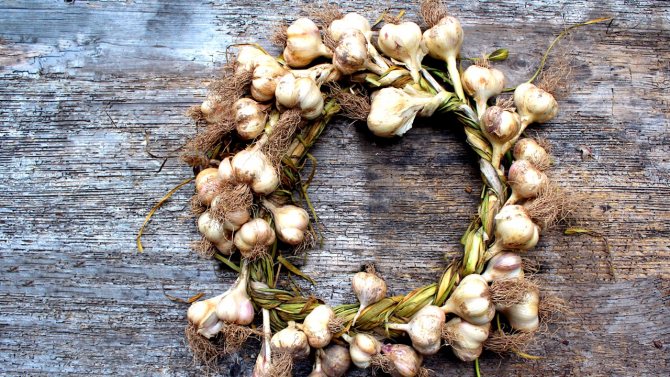

In order for garlic not to lose its appearance and useful properties for as long as possible, it should be properly stored. There are several ways, one of them is storage in braids. To do this, you need to firmly braid the stems and hang them in the pantry. Garlic is also stored in glass jars, and due to the fact that they do not allow air and moisture to pass through, the vegetable does not rot. Well-dried heads can be put in them, both disassembled and whole. There are other storage methods - in salt or paraffin. Each onion is dipped in liquid melted paraffin.
Lunar calendar and tips for specific regions


It is necessary to dig up garlic planted before winter in 2020 in the Moscow region according to the lunar cycle. The presented table can help with this.
| Auspicious days of July | Auspicious days of August |
| 5-7 | 1-4 |
| 15 | 11-13 |
| 18-19 | 29-30 |
| 23-24 | — |
| 31 | — |
An unripe vegetable contains a lot of moisture, so if it is harvested early, it will quickly become unusable. In different regions of Russia, the climate is completely different. In the Moscow region, Siberia and the Urals, it is best to plant early varieties of garlic, because the late ones before the arrival of cold weather will not have time to harvest. Digging up a winter vegetable in temperate regions begins in July. In the Moscow region, the growing season slightly increases, so the harvest is delayed by 7 days. Since spring varieties grow a little longer than winter varieties, they are dug up 2 weeks later, in mid or late August.


